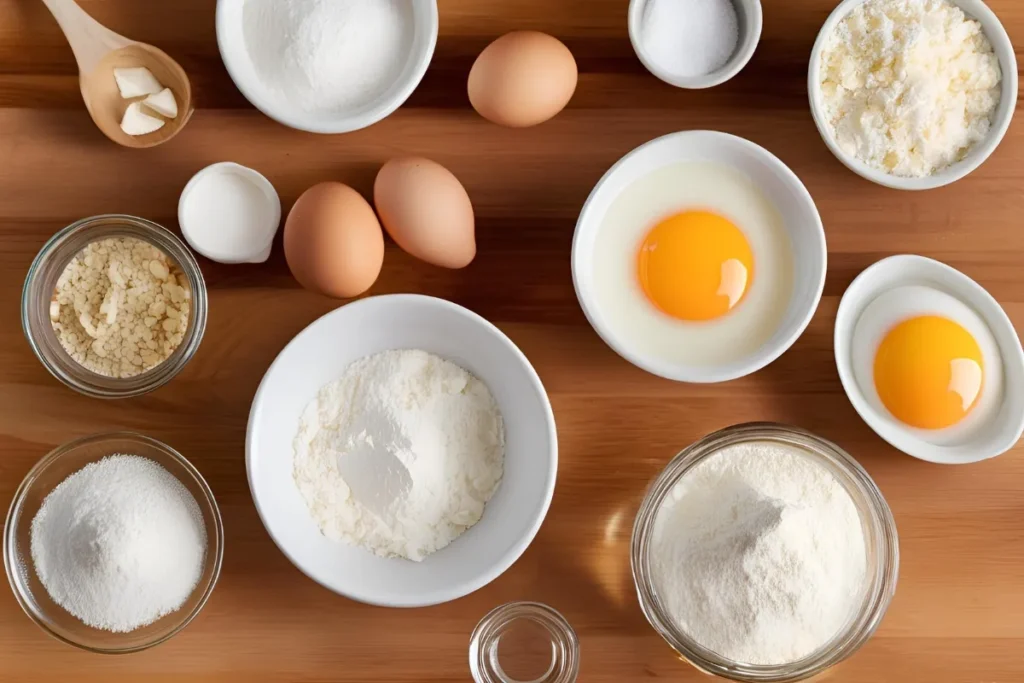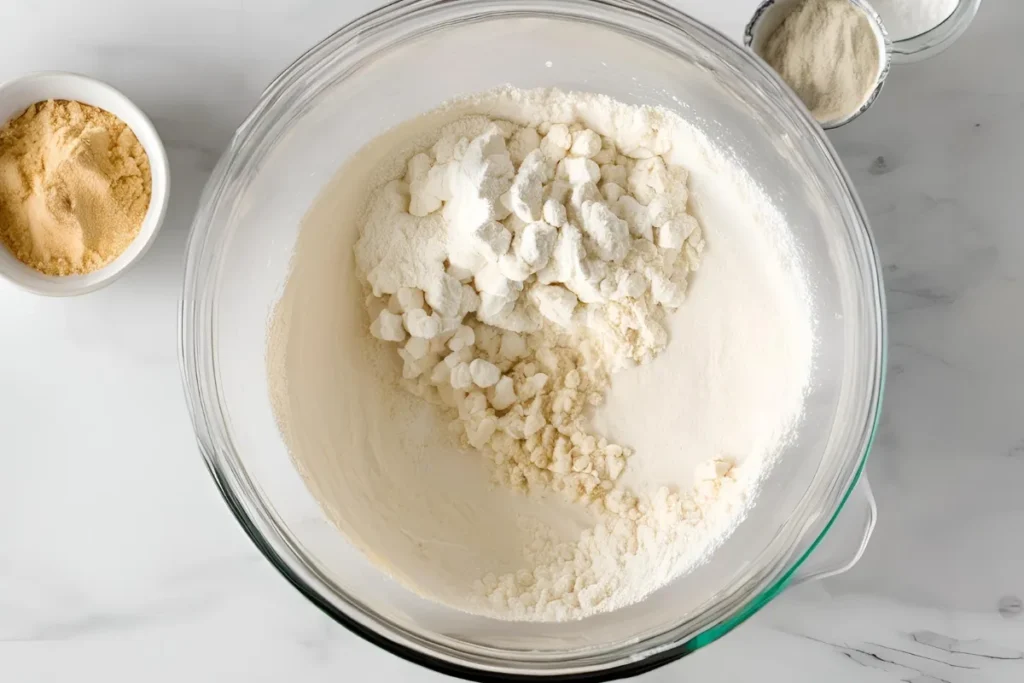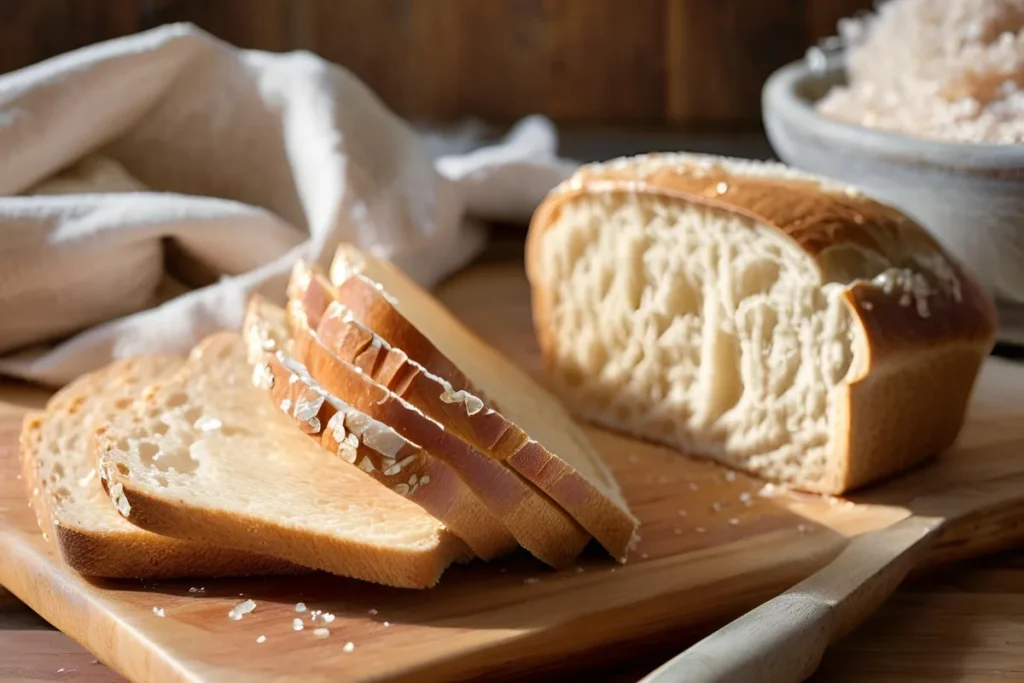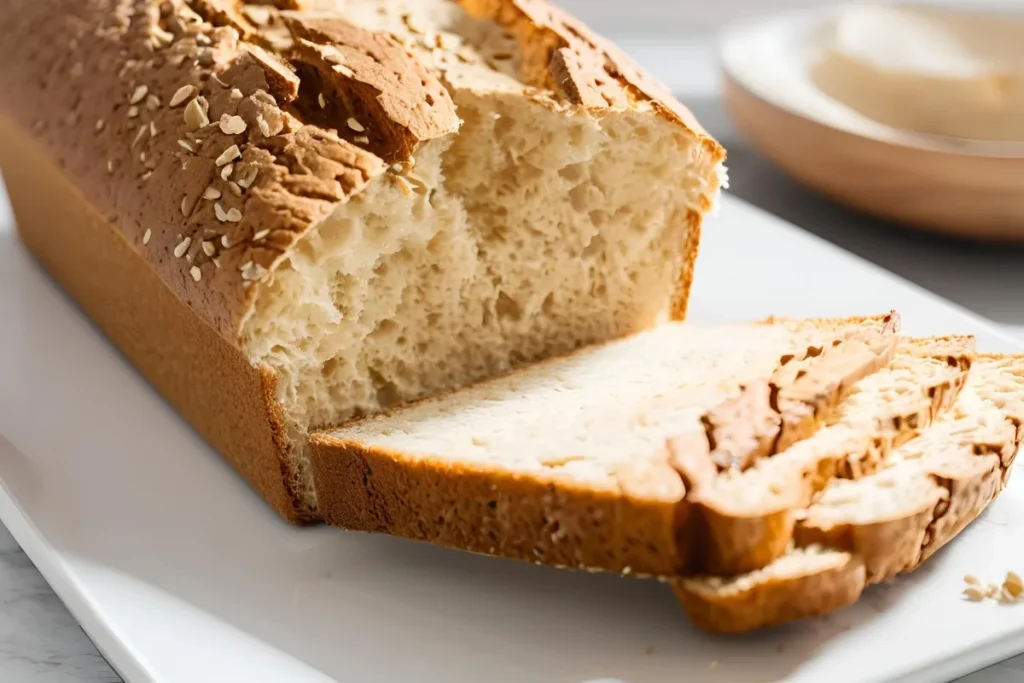Understanding Rising Recipes
When it comes to baking, achieving the perfect rise can feel a bit like magic. But behind every fluffy loaf of bread or airy cake is a precise science that brings it all together. This journey through rising recipes is your gateway to mastering the art of using rising agents to create culinary wonders. Whether you’re kneading dough for the perfect loaf or whipping up pancakes, understanding the role of rising agents can transform your baking game.
What Are Rising Recipes?

Rising recipes are dishes—mostly baked goods—that rely on rising agents to expand, lighten, and improve texture. From bread and cakes to muffins and waffles, these recipes use specific agents to create the volume and softness we all love.
Defining Rising Agents in Cooking
Rising agents are ingredients that produce gas, such as carbon dioxide, during mixing or baking. This gas gets trapped in the dough or batter, causing it to expand. The result? A lighter, more tender texture in your finished product.
For example, yeast feeds on sugar and releases carbon dioxide, helping dough rise over time. Meanwhile, baking soda reacts with acidic ingredients, instantly forming bubbles.
Types of Rising Agents: Chemical, Biological, and Physical
- Chemical Agents: Baking soda and baking powder are prime examples. They release carbon dioxide through chemical reactions.
- Biological Agents: Yeast and bacteria, like those in sourdough starters, are living organisms that ferment sugars to produce gas.
- Physical Agents: Techniques like whipping egg whites or creaming butter and sugar introduce air manually.
Each type plays a unique role depending on the recipe, but they all share the common goal of making baked goods soft, airy, and delicious.
The Importance of Proper Rising in Recipes
The process of rising does more than just make your baked goods taller. It significantly impacts their flavor, texture, and overall appeal.
Enhancing Texture and Flavor with Proper Rising Techniques
When dough or batter rises well, the end result is soft, tender, and evenly cooked. Proper rising also enhances flavor by allowing ingredients to blend and develop fully. For example, the long fermentation of sourdough dough results in a complex, tangy flavor that’s hard to beat.
Moreover, a good rise ensures the right balance of moisture and air pockets. This makes each bite light and satisfying instead of dense and heavy.
Common Challenges in Achieving Perfect Rise
However, achieving that ideal rise can sometimes feel elusive. Some common obstacles include:
- Incorrect measurements: Too much or too little of a rising agent can lead to flat or overly puffed results.
- Temperature issues: Yeast thrives at specific temperatures, and even slight variations can slow or stop fermentation.
- Overmixing: This can overdevelop gluten in recipes like cakes, making them tough instead of tender.
By understanding these challenges, you can better anticipate and troubleshoot issues before they ruin your recipe.
Who Should Be Interested in Rising Recipes?
Rising recipes aren’t just for professional bakers—they’re for anyone who loves the art of cooking and baking.
Home Bakers and Professional Chefs
Home bakers seeking to create the fluffiest cinnamon rolls or the crustiest sourdough loaves will benefit from mastering rising recipes. Likewise, professional chefs rely on advanced techniques to achieve consistency and innovation in their kitchens.
Nutrition Enthusiasts Exploring Baking Science
For those who geek out over food science, rising recipes provide a fascinating look into the chemistry of cooking. Understanding how ingredients interact and how to tweak recipes for dietary needs, like gluten-free baking, opens up endless possibilities.
Key Background of Rising Recipes
Before modern baking techniques, rising methods were more about intuition than precision. Over time, these methods have evolved into an exact science.
Evolution of Baking Techniques Over Time
Baking has been around for thousands of years, but it wasn’t always so reliable. Ancient bakers relied on natural fermentation (like wild yeast) to make bread rise. It wasn’t until the 19th century that chemical agents like baking soda and baking powder revolutionized baking, making it faster and more predictable.
Cultural Influences on Rising Methods
Different cultures have their unique approaches to rising recipes. For instance:
- In Italy, focaccia dough rises twice for a soft, airy texture.
- In India, naan bread relies on yogurt and yeast for its rise.
- In the U.S., self-rising flour—a blend of flour, baking powder, and salt—simplifies the process of creating biscuits and pancakes.
These traditions show how rising recipes adapt to local ingredients and tastes, creating a diverse world of baking possibilities.
Exploring the Basics of Rising Agents
Rising agents might seem like a small part of a recipe, but they hold the key to transforming dense batter into fluffy, airy perfection. Let’s break down their role in baking and how to use them effectively.
What Makes Flour Rise? The Role of Gluten and Agents
Flour alone doesn’t rise—it needs help. Gluten, a protein found in wheat, is crucial for creating the structure that traps gases produced by rising agents. When you knead or mix dough, gluten strands form a stretchy network that expands as gases like carbon dioxide build up.
Rising agents like yeast or baking powder supply the gases that make this process possible. Yeast ferments sugars, while chemical agents create gas through reactions with moisture or acid. In either case, the flour and rising agents must work together to create that soft, fluffy texture we love.
Differences Between All-Purpose Flour and Self-Rising Flour
Here’s where things get interesting: not all flours are created equal. All-purpose flour is versatile but lacks added rising agents. On the other hand, self-rising flour includes baking powder and salt, making it a convenient option for quick recipes.
That said, self-rising flour isn’t a one-size-fits-all solution. Recipes requiring precise ratios of baking powder, salt, or yeast—like bread—often perform better with all-purpose flour and customized measurements of rising agents.
Substituting All-Purpose Flour for Self-Rising Flour: Key Considerations

Yes, you can substitute all-purpose flour for self-rising flour, but you’ll need to add the missing ingredients:
- For every cup of all-purpose flour, add 1 ½ teaspoons of baking powder and ¼ teaspoon of salt.
Keep in mind, this substitute works best in recipes explicitly designed for self-rising flour. Cakes, muffins, and biscuits? Sure! Bread dough or yeast-based recipes? Not so much—these rely on different rising processes.
Salt-Rising Bread: A Unique Perspective
Salt-rising bread is a fascinating, old-fashioned recipe that doesn’t use yeast. Instead, it relies on the fermentation of bacteria naturally present in cornmeal or potatoes.
How Salt Acts as a Rising Agent
Interestingly, salt itself isn’t the rising agent in this bread. Instead, it regulates the fermentation process by controlling bacterial growth. The bacteria break down carbohydrates, releasing gas that gives the bread its rise.
Salt-rising bread has a distinct flavor—slightly cheesy and tangy—and a dense, yet tender crumb. It’s a truly unique recipe, steeped in history and tradition.
Is Salt-Rising Bread High in Sodium? Myths and Facts
Despite its name, salt-rising bread isn’t as high in sodium as you might think. Most of the sodium comes from added salt, which can be adjusted to suit dietary needs. On average, one slice of salt-rising bread contains about 200-250 mg of sodium.
For those looking to reduce sodium intake, it’s possible to experiment with lower-sodium versions of this recipe without sacrificing too much of its distinctive flavor.
Scientific and Technical Insights on Rising Recipes
Let’s dig deeper into the science of rising agents and how they work. Whether you’re using yeast, baking soda, or whipping egg whites, the processes are as fascinating as they are essential.
How Yeast and Bacteria Contribute to Dough Rise
Yeast and certain bacteria are living organisms that feed on sugars in the dough, releasing carbon dioxide as a byproduct. This process, known as fermentation, creates the airy bubbles that give bread its structure.
For example:
- Yeast works slower but adds a complex, slightly tangy flavor.
- Bacteria like those in sourdough starters or salt-rising bread contribute unique flavors while helping dough rise.
The longer fermentation occurs, the more developed the flavors and textures become. That’s why slow-rise recipes like sourdough taste so amazing!
The Chemistry of Baking Powder and Baking Soda in Recipes
Baking powder and baking soda are powerhouse chemical leaveners, but they function differently.
- Baking soda: Reacts immediately with acidic ingredients (like buttermilk or vinegar) to produce carbon dioxide.
- Baking powder: Contains both an acid and a base, so it reacts twice—once when mixed with liquid, and again when heated.
This dual-action makes baking powder perfect for recipes that need a sustained rise, like cakes and muffins.
Environmental Factors That Affect Rising in Baking
Temperature, humidity, and even altitude can impact how well your baked goods rise. For instance:
- Yeast rises faster in warm conditions but can die if it gets too hot.
- High altitude affects air pressure, often requiring adjustments to rising agents.
By paying attention to these variables, you can tweak recipes to ensure they perform well no matter where you’re baking.
The Benefits of Mastering Rising Recipes
When you understand how rising agents work, you unlock the potential to create better, more consistent baked goods.
Improving Texture and Shelf-Life of Baked Goods
Mastering the right techniques can help extend the freshness of your baked goods. Proper rising traps moisture and creates a structure that prevents bread from going stale too quickly. For example, adding fats like butter or oil can enhance both texture and shelf-life.
Encouraging Healthier Choices Through Controlled Ingredients
Knowing how rising agents work also allows you to make healthier substitutions. For instance, you can experiment with whole-grain flours or reduce sodium in recipes without compromising the quality of your baked goods.
Practical Tips for Success with Rising Recipes
Mastering rising recipes doesn’t have to be intimidating. With a few tips and tricks, you can achieve consistent, bakery-quality results in your kitchen.
How to Substitute Ingredients in Rising Recipes
Sometimes you don’t have all the ingredients on hand, or you may need to tweak a recipe for dietary preferences. Here’s how to make smart substitutions without compromising the quality of your baked goods.
Replacing Self-Rising Flour with Alternatives
If you’re out of self-rising flour, don’t panic! You can make your own with just a few pantry staples:
- Mix 1 cup of all-purpose flour with 1 ½ teaspoons of baking powder and ¼ teaspoon of salt.
This DIY substitute works perfectly for recipes like biscuits, pancakes, or quick breads. However, it may not be ideal for more complex recipes requiring yeast or precise rising techniques.
Balancing Rising Agents with Salt for Healthier Outcomes
When tweaking recipes to reduce sodium, the balance between salt and other rising agents is critical. Salt isn’t just a flavor enhancer—it controls yeast activity and strengthens gluten structure.
- If reducing salt, compensate by slightly decreasing yeast or increasing kneading time to maintain texture.
- For baking powder-based recipes, choose low-sodium versions to achieve similar results.
Experimenting with these adjustments can lead to healthier bakes without sacrificing taste or texture.
Common Mistakes in Rising Recipes and How to Avoid Them
Even seasoned bakers encounter challenges with rising recipes. By identifying common pitfalls, you can troubleshoot and avoid baking disasters.
Overproofing and Underproofing Dough
Proofing dough—the process of letting it rise before baking—requires careful timing.
- Overproofed dough becomes too airy and collapses during baking, leading to dense results.
- Underproofed dough hasn’t risen enough, resulting in a tight, chewy texture.
To get it right, keep an eye on the dough’s volume. A general rule is to let it double in size, but pressing gently with a finger can also indicate readiness. If the dough springs back slowly, it’s good to go.
Miscalculating Ratios of Rising Agents
Too much or too little of a rising agent can throw off a recipe. For instance:
- Excess baking powder can lead to bitter flavors and uneven rising.
- Insufficient yeast may prevent the dough from rising properly.
Always measure carefully, and when in doubt, follow the recipe exactly—especially if you’re new to baking.
Real-World Examples and Popular Rising Recipes
Let’s dive into some practical examples to showcase the magic of rising agents. Whether you’re baking bread or cake, these recipes highlight the importance of proper technique.
Salt-Rising Bread: A Step-by-Step Guide

Salt-rising bread is a truly unique recipe with a long history. Here’s how to make it at home:
Ingredients:
- 2 cups whole milk, warmed
- ½ cup cornmeal
- 1 teaspoon sugar
- 1 teaspoon salt
- 4 cups all-purpose flour
Instructions:
- Combine the milk, cornmeal, sugar, and salt in a bowl. Cover and let it ferment overnight in a warm place.
- The next day, mix the fermented starter with flour to form a dough. Knead until smooth.
- Allow the dough to rise in a greased bowl until doubled in size.
- Shape into loaves, place in bread pans, and let rise again.
- Bake at 375°F (190°C) for 30–35 minutes until golden brown.
Salt-rising bread has a dense crumb and cheesy flavor, making it a perfect pairing with soups or stews.
Classic Cakes Using Baking Powder
Cakes rely on chemical leaveners like baking powder for a soft, fluffy texture. A basic vanilla cake recipe is a great place to start:
Ingredients:
- 2 ½ cups all-purpose flour
- 2 teaspoons baking powder
- ½ teaspoon salt
- 1 cup unsalted butter, softened
- 2 cups sugar
- 4 large eggs
- 1 cup whole milk
Instructions:
- Preheat the oven to 350°F (175°C). Grease and flour two 9-inch round pans.
- Whisk the flour, baking powder, and salt.
- Cream butter and sugar until fluffy. Add eggs one at a time.
- Alternate adding the dry ingredients and milk, starting and ending with the dry mix.
- Pour into pans and bake for 25–30 minutes.
This cake is a classic crowd-pleaser, ideal for birthdays or celebrations.
Gluten-Free Alternatives for Rising Recipes

For those avoiding gluten, mastering gluten-free rising recipes is key. Ingredients like xanthan gum or psyllium husk can mimic gluten’s elasticity, while baking powder and soda handle the rise. Try using a gluten-free flour blend in your favorite recipes and experiment with hydration levels for better results.
Future Trends in Baking and Rising Recipes
Baking, like any art, evolves with the times. As health and sustainability become priorities, rising recipes are adapting to meet modern needs.
Innovations in Rising Agents for Gluten-Free Baking
The rise of gluten-free diets has sparked innovation in alternative flours and leavening techniques. Advances in fermentation and enzyme-based solutions are making gluten-free breads and cakes more enjoyable than ever before.
Focus on Sustainable and Low-Sodium Rising Techniques
Sustainability is also shaping the future of rising recipes. Home bakers are increasingly using locally sourced flours and experimenting with natural starters like sourdough to reduce waste. Additionally, the demand for low-sodium options is driving the development of healthier baking powder alternatives.
FAQs
Can I substitute all-purpose flour for self-rising flour?
What Happens When You Substitute Without Adjustments?
Substituting all-purpose flour for self-rising flour isn’t as simple as a one-to-one switch. Self-rising flour contains added baking powder and salt, so skipping these can leave your baked goods flat and flavorless. For example, biscuits or pancakes may fail to rise and result in dense textures.
How to Create a Self-Rising Flour Substitute at Home
If you don’t have self-rising flour on hand, here’s a quick fix:
- Mix 1 cup of all-purpose flour with 1 ½ teaspoons of baking powder and ¼ teaspoon of salt.
This substitute works well for most recipes, but for specific results—like bread doughs—you’ll need a rising agent like yeast instead.
Is salt-rising bread high in sodium?
Breaking Down the Sodium Content in Salt-Rising Bread
The name salt-rising bread can be misleading—it doesn’t mean the bread is overly salty. While salt does play a key role in controlling bacterial growth during fermentation, the actual sodium content per slice (about 200-250 mg) isn’t dramatically higher than other breads.
Tips to Lower Sodium in Salt-Rising Bread Recipes
If you’re looking to reduce sodium, you can tweak the recipe without compromising its unique flavor. Try using low-sodium salt alternatives or reducing the amount of added salt while keeping the fermentation process intact.
How does yeast contribute to dough rise?
Yeast is a living organism that ferments sugars in dough, releasing carbon dioxide gas in the process. This gas creates air bubbles, which are trapped by gluten strands, causing the dough to expand. The longer the fermentation, the more flavor develops, making yeast essential for rich, flavorful breads like sourdough and brioche.
What’s the difference between baking powder and baking soda?
Baking powder and baking soda are both chemical leaveners, but they work differently:
- Baking soda needs an acidic ingredient to activate, producing carbon dioxide immediately.
- Baking powder contains both an acid and a base, allowing it to react twice—once when mixed with liquid and again during baking.
These differences make baking powder more versatile, while baking soda excels in recipes with natural acids like lemon juice or yogurt. for more breakfast ideas visit our collection

